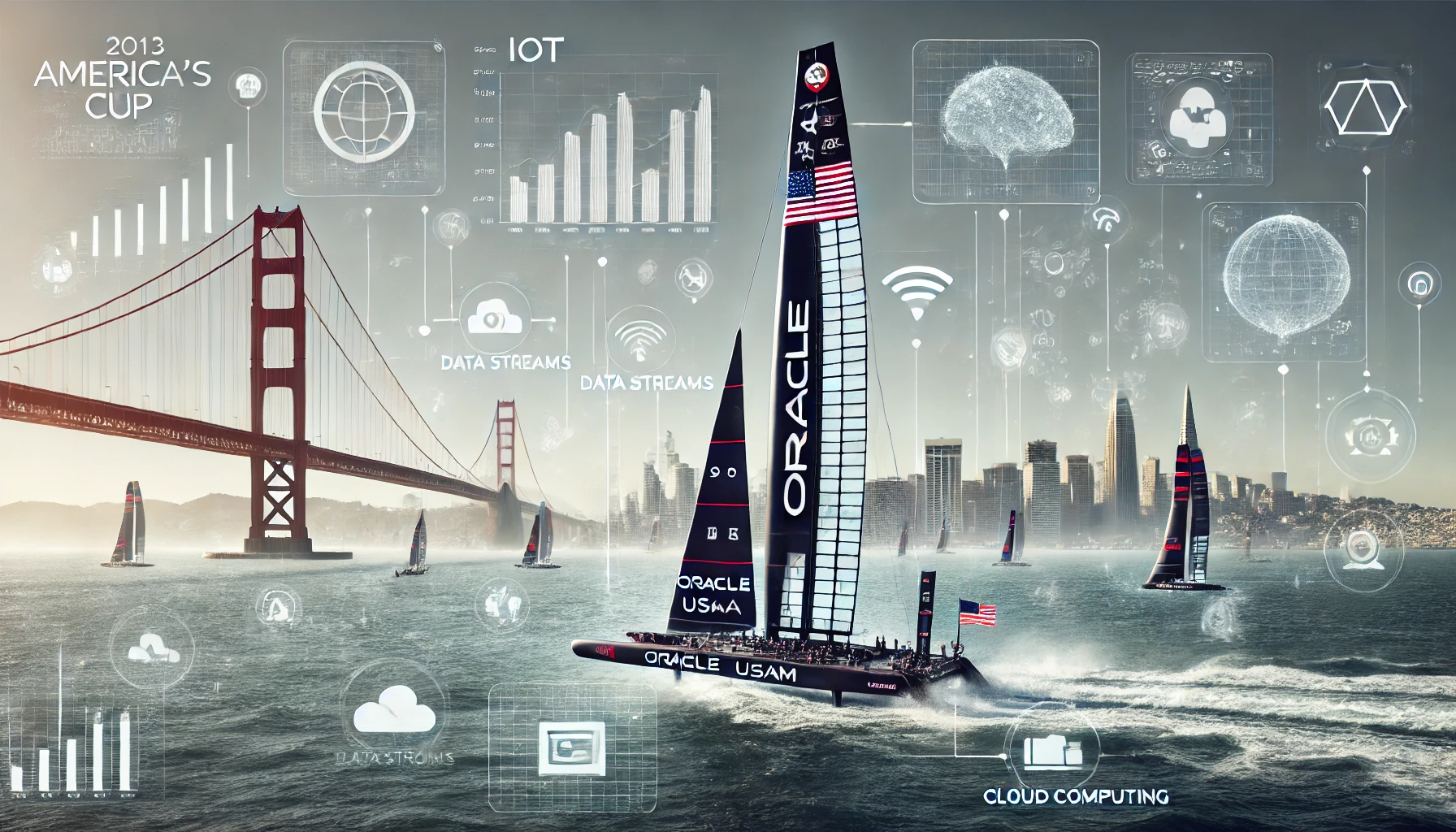The Oracle USA team used IoT technology to pull off the upset in the 2013 America’s Cup, using cloud computing to solve IoT security and data processing challenges.
In September 2013, the 34th America’s Cup sailing competition in San Francisco, USA, took an unexpected turn. Trailing 1-8, Team Oracle USA rallied to win eight straight races in the final minutes of the race to win 9-8. Many attributed the upset to the Internet of Things (IoT) technology installed on the boat, sponsored by IT company Oracle. The Oracle USA team’s IoT-equipped boat is outfitted with more than 400 sensors that collect real-time data on wind speed, direction, mast condition, and boat movement. This information is fed to the yacht’s analytics team to help them figure out the fastest way to maneuver the boat.

So what is IoT? Simply defined, the Internet of Things (IoT) is a technology that connects people, things, places, and everything else (Things) to each other over the Internet so that the information generated from them can be collected and shared or utilized. If you look back at telecom commercials from a few years ago, you’ll often see people using their smartphones to check the temperature, humidity, and window status of their homes and manage them remotely while away from home. Today, this is no longer a fantasy, but a reality. Of course, the IoT has made this possible. These are just a few examples of how the Internet has connected people, objects, and spaces through sensors installed in objects and spaces.
However, the IoT is not without its drawbacks. The most important ones are weak security and excessive data. The sensors on the yacht in the previous example produce 200 gigabytes of information every day, with 30 million sensor data points per second, and they only share this information with the user. What is needed to connect and manage this closed and overflowing data is IoT’s big data and collaboration with cloud computing.
Cloud computing is a concept that has recently emerged in response to the growing demand for enterprise applications that require rapid processing of massive amounts of data and the need to reduce the cost of hardware purchases. Cloud refers to the Internet, and computing refers to any activity that develops and uses computer technology resources. Therefore, cloud computing is the use of computers over the Internet. Cloud computing companies leverage internet technology to provide virtualized IT resources (networks, servers, storage, and applications) to consumers. This allows consumers to use the services provided by cloud computing on a variety of devices anytime, anywhere with an internet connection.
So how can cloud computing be leveraged to address the challenges of IoT? The first issue to address is the cost of excessive data and battery issues. The more data you process, the more you need to install higher performance and a larger number of information processing devices, as well as sensors, on your objects. This creates the most basic problem: money, and it also creates the problem of using more power and running out of battery. However, with high-performance cloud computing, objects only need to be equipped with devices that can transmit and display information. This automatically solves the battery problem and saves money by using less power. This is exactly what cloud computing was created for. The next problem to be solved is security, which will likely be addressed by information security companies as consumers demand more privacy and security. Finally, the closed IoT landscape will give way to a more open IoT landscape if the wealth of information stored in storage is used by the right people at the right time. Of course, the use of such information requires the consent of the data provider.
As technology innovator and entrepreneur Kevin Ashton, the creator of the IoT concept, said in 1999 “If everything had a computer in it and could learn and decide for itself without our help, we wouldn’t have to worry about breakdowns, replacements, shelf life, etc. The IoT will change the world more than the Internet did.” Indeed, the world is becoming increasingly dependent on the judgment of computers connected to space and humans. So, if we can solve the problems of IoT, such as security, and create a more open IoT environment using big data and cloud computing, the future that Kevin Ashton envisioned may not be too far off.
 I’m a blog writer. I want to write articles that touch people’s hearts. I love Coca-Cola, coffee, reading and traveling. I hope you find happiness through my writing.
I’m a blog writer. I want to write articles that touch people’s hearts. I love Coca-Cola, coffee, reading and traveling. I hope you find happiness through my writing.